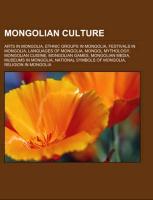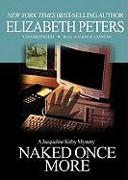- Start
- Mongolian Culture
Mongolian Culture
Angebote / Angebote:
Source: Wikipedia. Pages: 126. Chapters: Arts in Mongolia, Ethnic groups in Mongolia, Festivals in Mongolia, Languages of Mongolia, Mongol mythology, Mongolian cuisine, Mongolian games, Mongolian media, Museums in Mongolia, National symbols of Mongolia, Religion in Mongolia, Sport in Mongolia, Mongols, Horse, Russian language, Buryats, Mongolian language, National Anthem of Mongolia, Kazakhs, Architecture of Mongolia, Epic of King Gesar, Evenki language, Mongolian wrestling, Tuvans, Culture of Mongolia, Red star, Borjigin, Buddhism in Mongolia, Bahá'í Faith in Mongolia, Mongol Rally, Tuvan language, Kumis, Khalkha Mongols, Mongolian American, Mongolian death worm, Tengri, Koreans in Mongolia, Media of Mongolia, Japanese language education in Mongolia, Kalmyk language, Freedom of religion in Mongolia, Islam in Mongolia, Altay language, Mythology of the Turkic and Mongolian peoples, Mongolia at the Olympics, Tsagaan Sar, Naadam, Ethnic Chinese in Mongolia, Roof of the world rally, Üliger, Daur people, Darkhad dialect, Shagai, Women in Mongolia, Emblem of Mongolia, Mongolian horse, Muushig, Dörbet, Torghut, Mongolia charity rally, Buryat language, Tengriism, Traditional Mongolian medicine, Ger magazine, Yak racing, Deel, Khorkhog, Khorchin, Flag of Mongolia, Uriankhai, Ovoo, Banner of the Mongols, Ötüken, Zakhchin, Goyol Fashion Festival, Bai-Ulgan, Boortsog, Soyombo symbol, Mongolian armour, Dukha, Qurut, Mongolian Sign Language, Altai Uriankhai, Imperial Seal of Mongolia, Khotogoid, Barga Mongols, Buuz, Rugby union in Mongolia, Khuushuur, Manzan Gurme Toodei, Solobung Yubin, National Museum of Mongolian History, Bayid, Public holidays in Mongolia, Ald, Eson xorgol, Atai Ulaan, Tsagaan Salaa Rock Paintings, Mongolian calendar, Khoit Tsenkher Cave Rock Art, Mongolia Buriat language, Ordos Mongols, Segeen Sebdeg, Mongolia national amateur boxing athletes, Yak polo, Evenki languages, Hinduism in Mongolia, Mongolian National Olympic Committee, Dariganga, Ünee tugalluulakh, Üzemchin, Esege Malan, Zasa Mergen Baatar, Mongolia at the 2006 Asian Games, Hujia, Bökhiin Örgöö, Mongolia at the 2008 Asian Beach Games, Mongolia at the 2009 Asian Indoor Games, Eagle festival, Odqan. Excerpt: The horse (Equus ferus caballus) is one of two extant subspecies of equus ferus, or the wild horse. It is a single-hooved (ungulate) mammal belonging to the taxonomic family Equidae. The horse has evolved over the past 45 to 55 million years from a small multi-toed creature into the large, single-toed animal of today. Humans began to domesticate horses around 4000 BC, and their domestication is believed to have been widespread by 3000 BC. Horses in the subspecies caballus are domesticated, although some domesticated populations live in the wild as feral horses. These feral populations are not true wild horses, as this term is used to describe horses that have never been domesticated, such as the endangered Przewalski's Horse, a separate subspecies, and the only remaining true wild horse. There is an extensive, specialized vocabulary used to describe equine-related concepts, covering everything from anatomy to life stages, size, colors, markings, breeds, locomotion, and behavior. Horses' anatomy enables them to make use of speed to escape predators and they have a well-developed sense of balance and a strong fight-or-flight instinct. Related to this need to flee from predators in the wild is an unusual trait: horses are able to sleep both standing up and lying down. ...
Folgt in ca. 10 Arbeitstagen

